This Week At Angama #39
2 November 2018 | Inside Angama | Tyler Davis

Although the wildebeest showed up below our lodge three months later than they did last year, they’ve begun their southward march about when we’d expect in a normal year. Only the last of the big herds remain in the southern part of the Mara Triangle, near the Tanzanian border. Although we only had a short window to enjoy them directly below camp, our guests have had a rich 16 weeks of migration drama within the Mara Triangle since the lead zebra arrived. Coincidentally, or perhaps relatedly (who can be sure with ditzy wildebeest), we have also experienced several short afternoon thunderstorms in the last week, indicating the start of the “short rains.” These are exciting times, as it means we’re transitioning back into the photographer’s season, with lush green landscapes and dramatic skies, and we no longer have the migration to distract us from the abundance and intrigue of our resident wildlife.

Winding our way north from the Tanzanian border, I noticed a family group of elephants diligently standing guard around sleeping youngsters in the shade of a Balanites. The mid-day sun created a lot of contrast, so after stitching together a panoramic to show more of the landscape, I converted to black and white. [Photograph by Tyler Davis – f 5.0, 1/5000, ISO 250]
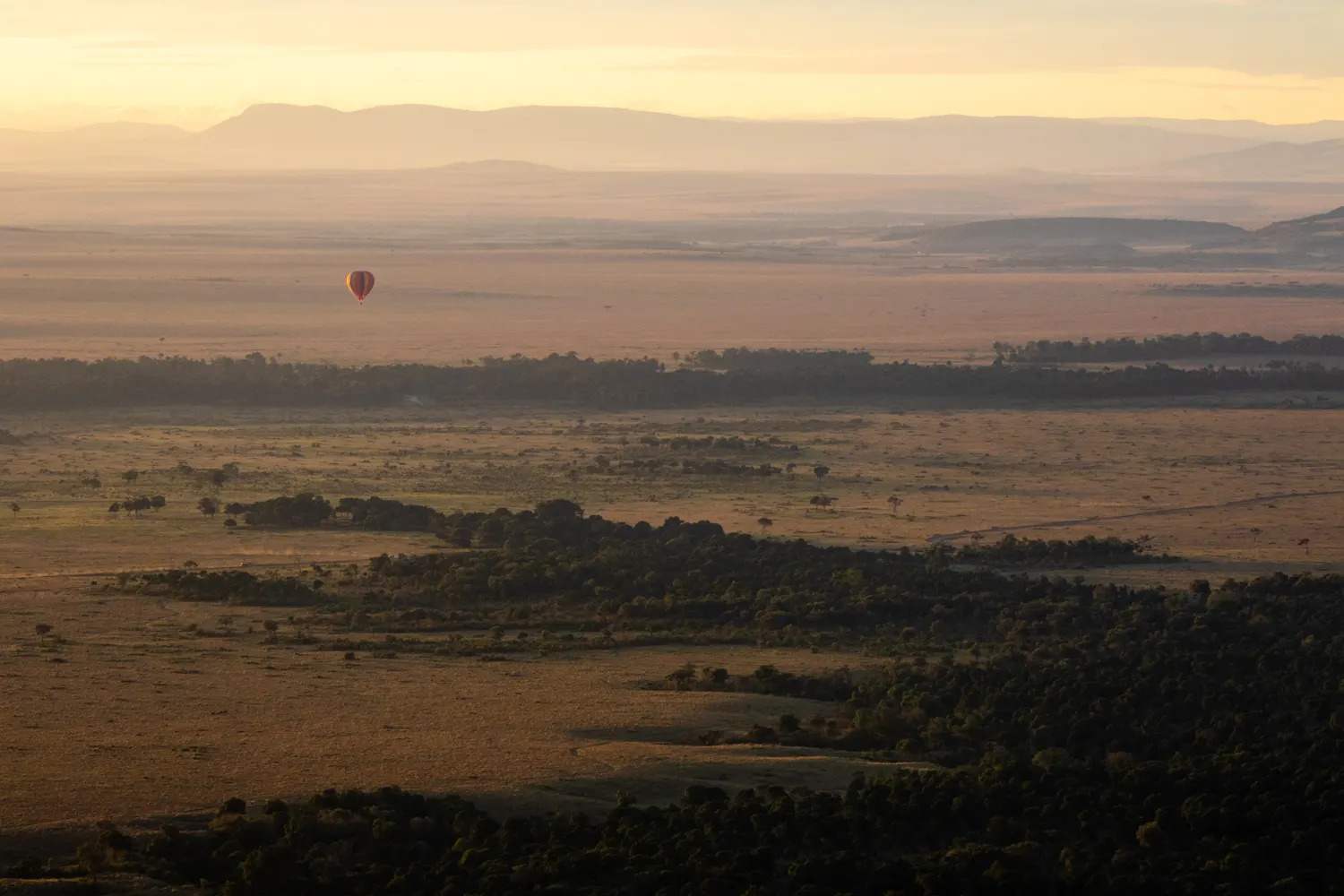
I’ve taken a version of this picture a thousand times, and it never gets old. The view that greets you at sunrise upon entering the Reserve via our private gate never disappoints.[Photograph by Tyler Davis – f 5.0, 1/500, ISO 200]
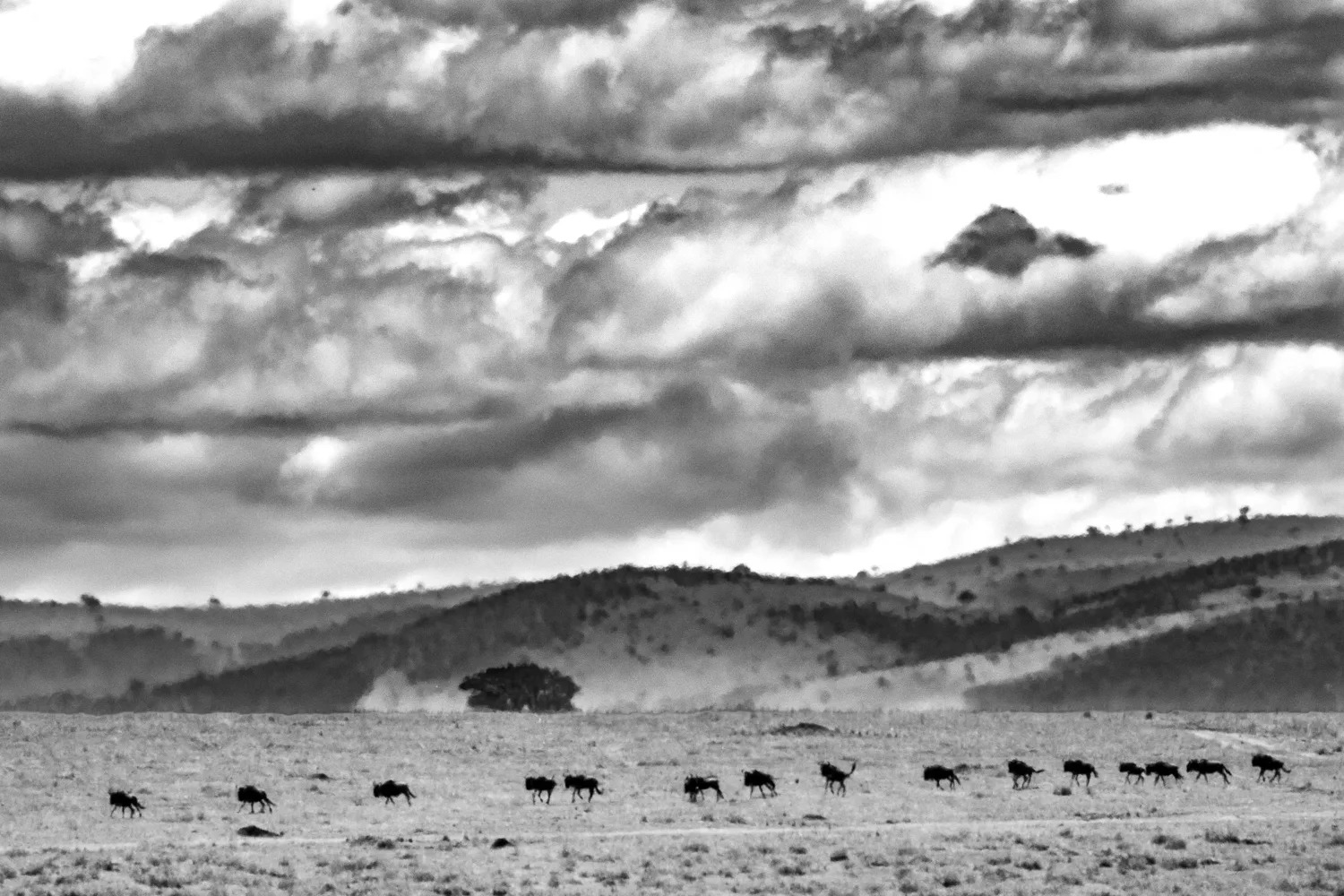
From far across the Mara River from where we sat, we noticed a line of wildebeest beelining over the horizon toward the river. We were sure we were in for some action; alas, they pulled up just short of the river and began grazing. However, I captured this image of their approach, and made an interesting image with some tweaking in Lightroom (convert to black and white, and adjust highlights, shadows, contrast, and clarity). [Photograph by Tyler Davis – f 5.6, 1/2500, ISO 200]
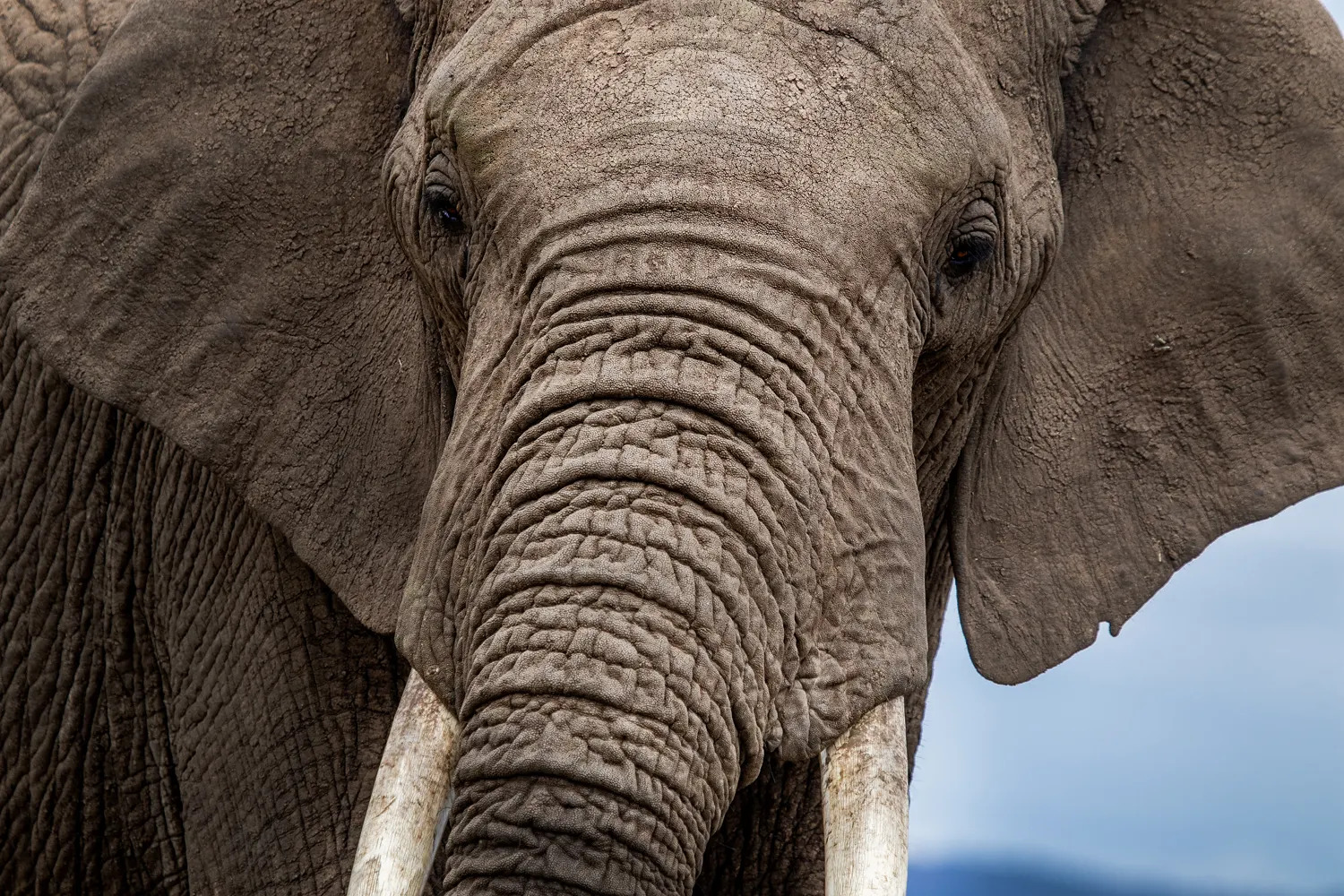
Such a beautifully crisp photo, well-framed by zooming in on the elephant bull’s visage, giving him character. [Photograph by Jeffrey Thige – f 5.6, 1/640, ISO 200]
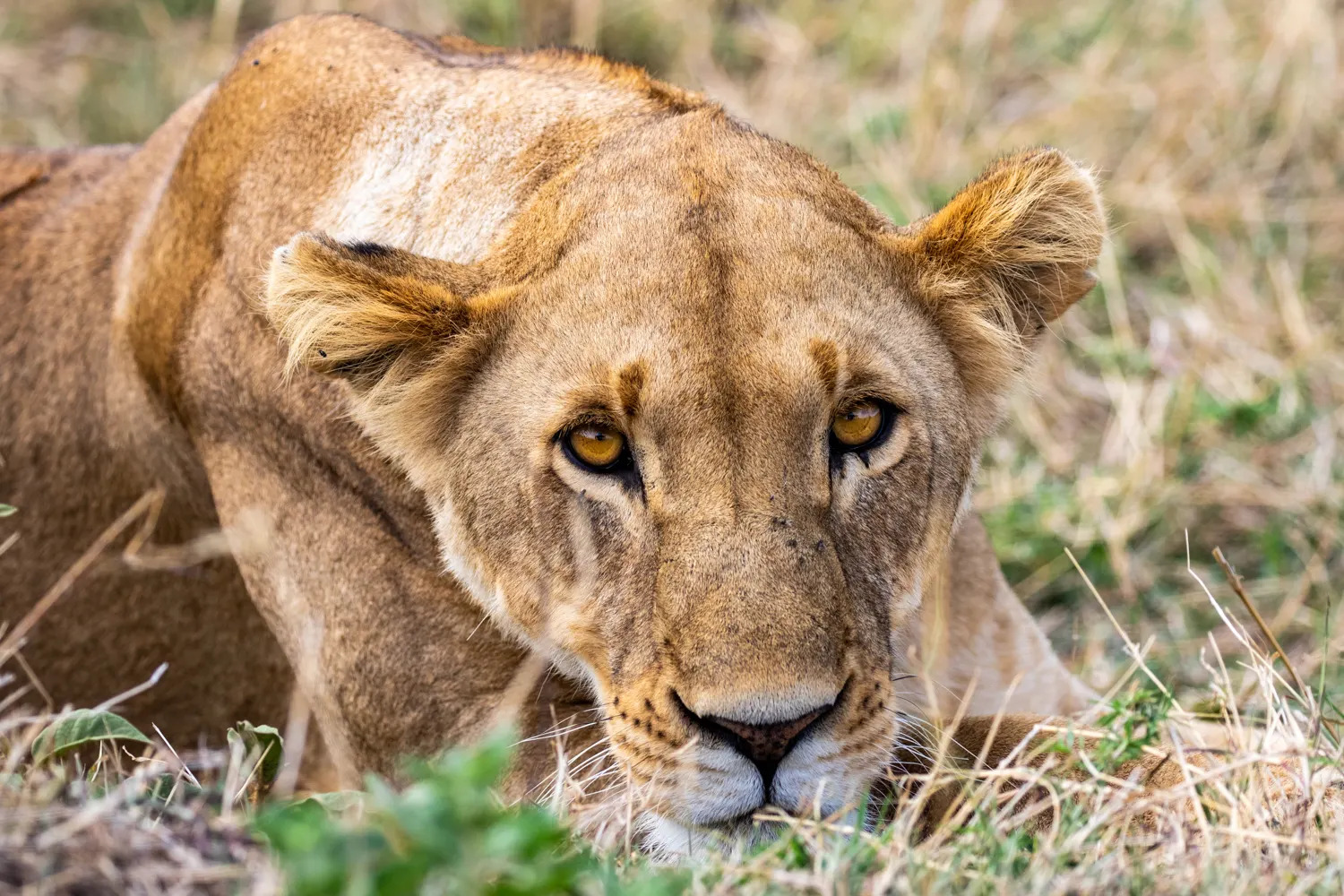
Nothing terribly special about this photo, except for the serendipitous capture of this lioness staring directly at the lens with such a melancholy look on her face. As photographers, we have to be careful of anthropomorphising the animals we photograph, but sometimes it just seems unavoidable. [Photograph by Tyler Davis – f 5.0, 1/640, ISO 200]

Why the photo of the random trees? Look closely . . . and see why the Mara’s most sought-after member of the Big 5 is also the most challenging to find. Nice spot by Jeffrey Thige (pun intended). [Photograph by Jeffrey Thige – f 5.6, 1/250, ISO 250]
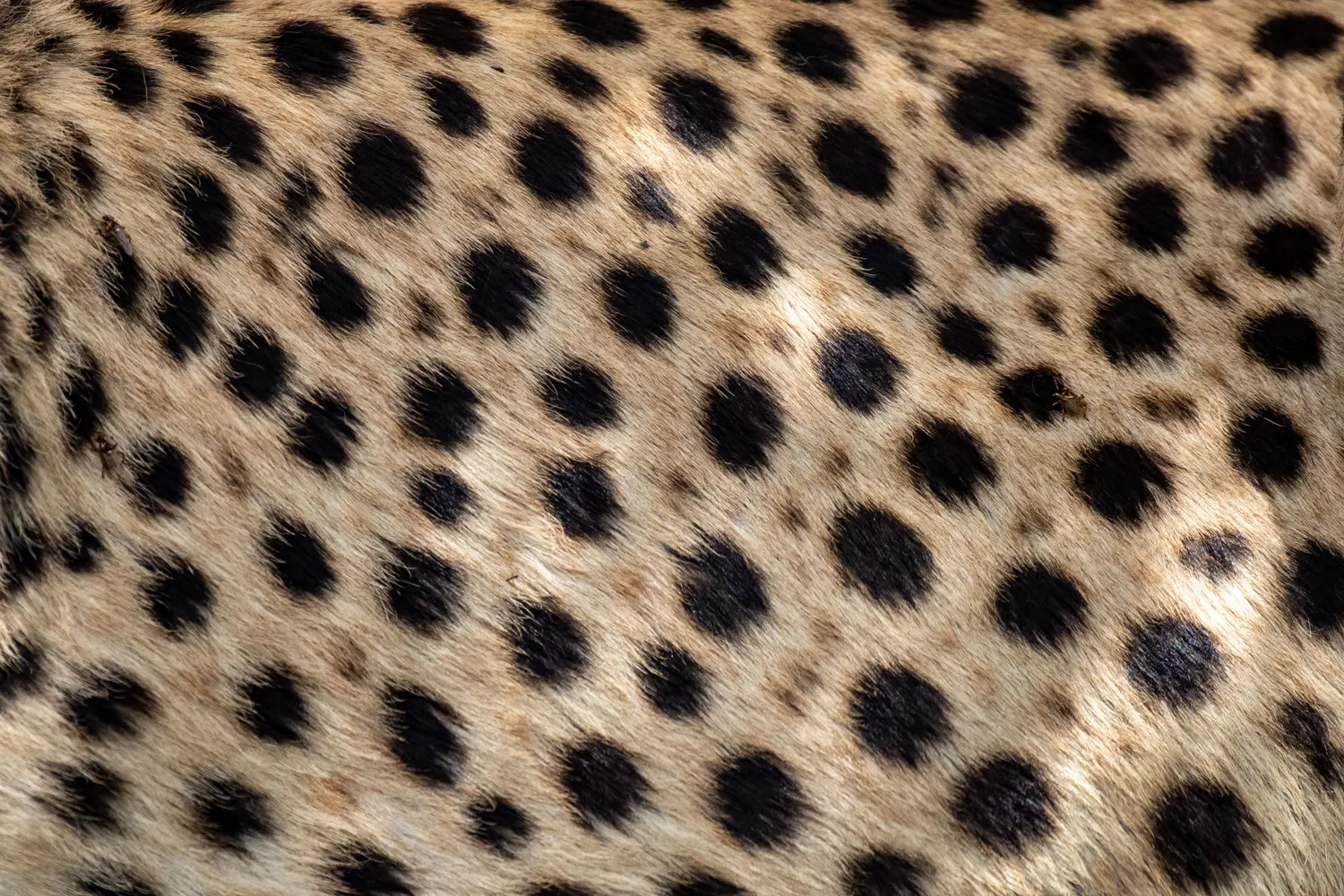
When we had a great sighting of a well-fed cheetah resting in the shade of a croton, but few photographic opportunities, I decided to take a close-up of the cheetah’s pelage. What I find interesting about this photo is how it looks out of focus – yet zooming in reveals good detail of the individual hairs. Is this evolution in action? Have the cheetah’s spots evolved to “blur,” helping the cheetah blend in more with its surroundings? [Photograph by Tyler Davis – f 5.6, 1/640, ISO 200]
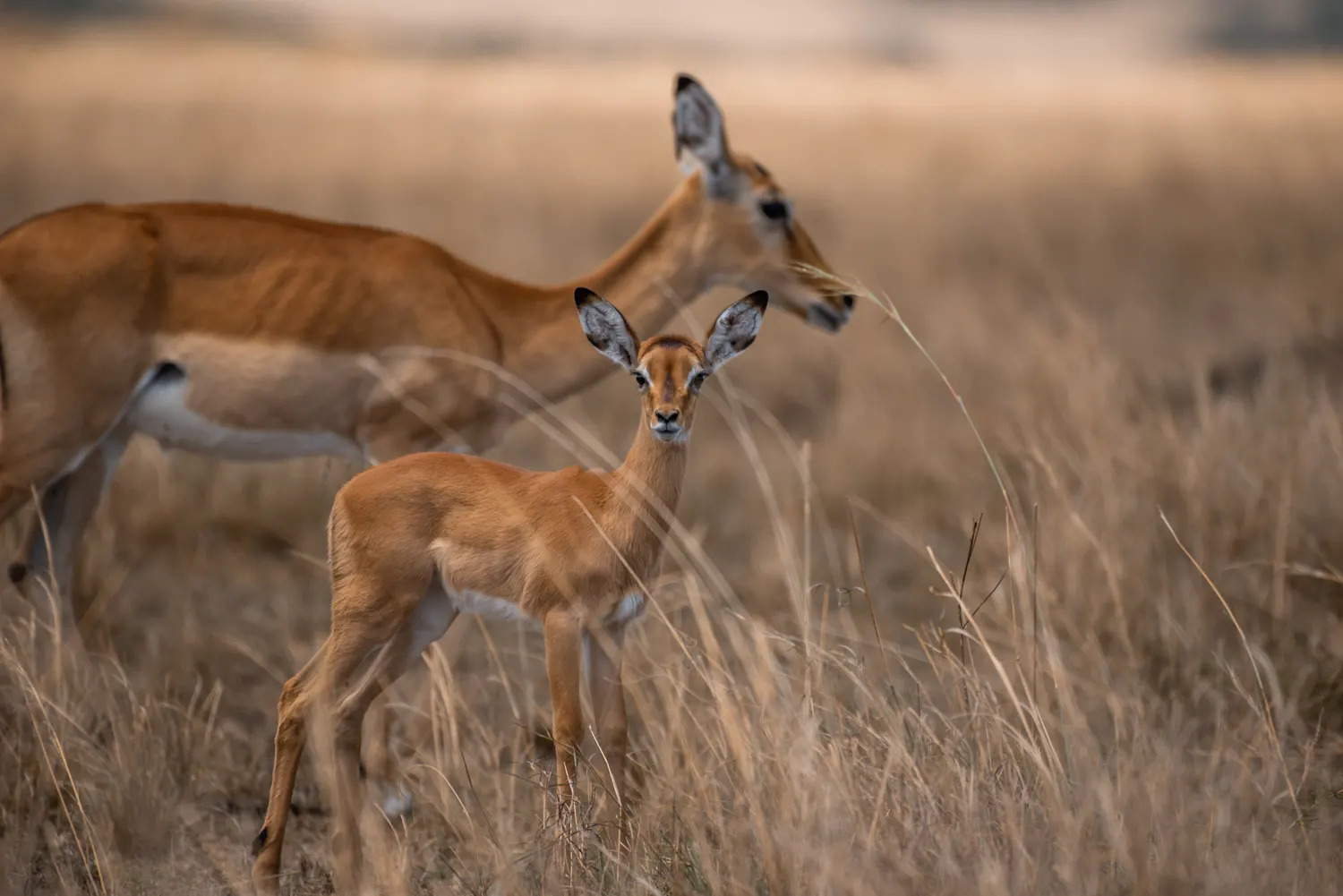
Fantastic light in this photo, and nice composition and depth of field with the impala lamb front and centre, peering through tall wands of grass, and the mother slightly out of focus immediately behind. [Photograph by Jeffre Thige – f 5.6, 1/800, ISO 320]
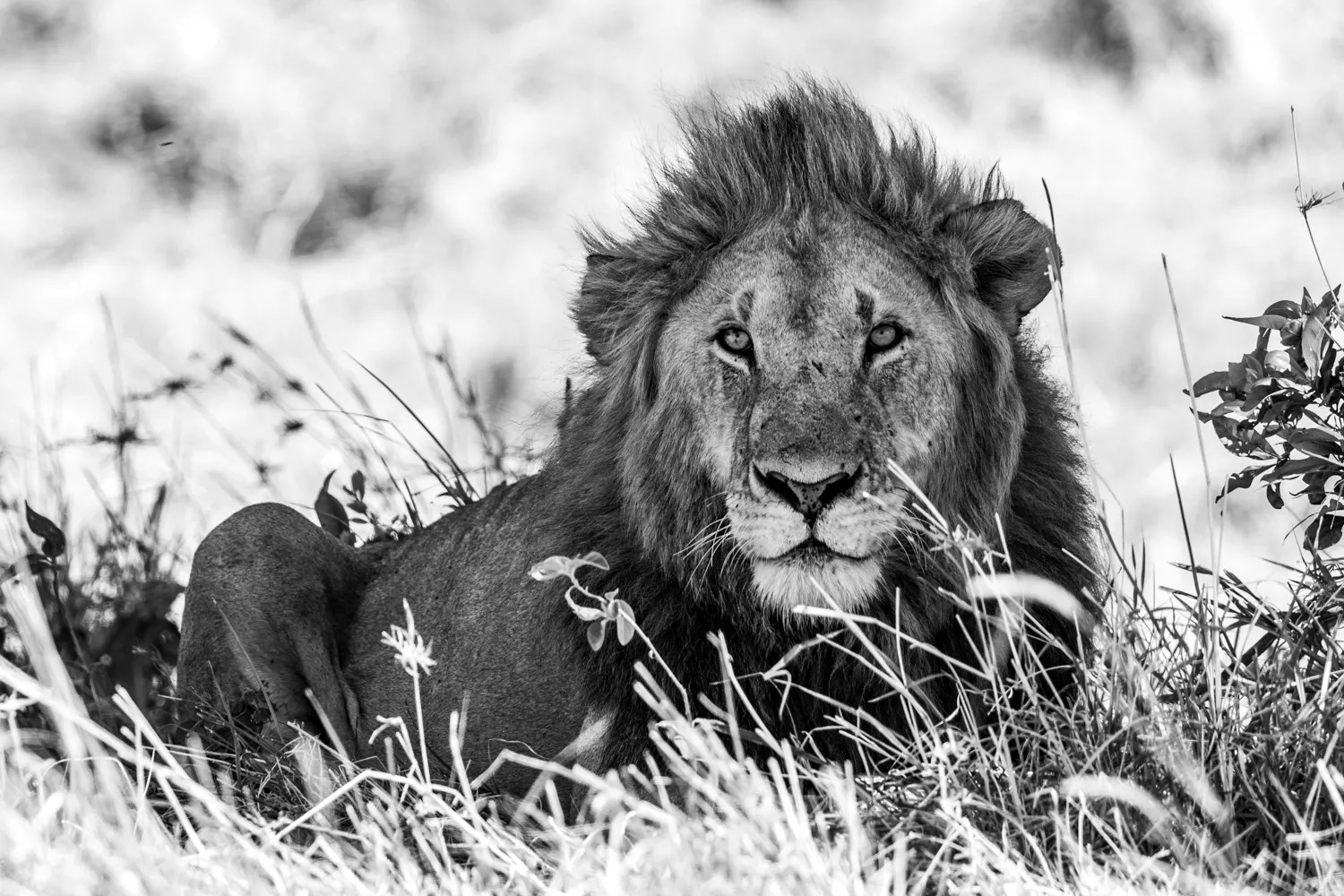
A mid-day sighting of a male lion resting in the shade makes for tough photography, so I exploited the extreme contrast by converting to black and white in Lightroom and increasing exposure and shadows to blow out the background and make the lion the sole focal point. [Photograph by Tyler Davis – f 5.0, 1/400, ISO 200]

Some exciting news recently that the Sausage Tree Pride has two new cubs, with possibly more on the way. We found them mid-day, so they were mostly lazing in the shade, but I was at the ready for one of the twins to pop up from feeding for a look around. [Photograph by Tyler Davis – f 5.6, 1/250, ISO 320]

[Photograph by Jeffre Thige – f 5.6, 1/500, ISO 200]
Without question, the most dramatic event in the Mara in the last week transpired when a pair of giraffe bulls took exception to one another and fought to the death – both of them! Swinging their long necks like medieval maces (as exemplified in the first photo above, by Jeffrey Thige), male giraffes can inflict serious damage and it’s not unusual for the loser to sustain life-threatening injuries. But for both contenders to go down in a heap side-by-side is positively extraordinary. Rumour has it that someone got a video of this epic battle, but most witnesses only saw the aftermath. It took 20 hours until scavengers worked up the courage to approach the two massive bulls (dangerous animals whose kicks can kill, hence the wait), but once they did, the feast was on. Lions, hyenas, jackals, over 200 vultures, and who knows what else revelled in their windfall meal, and Adam Bannister was there to capture the remarkable shots below. (Photographs by Adam Bannister)
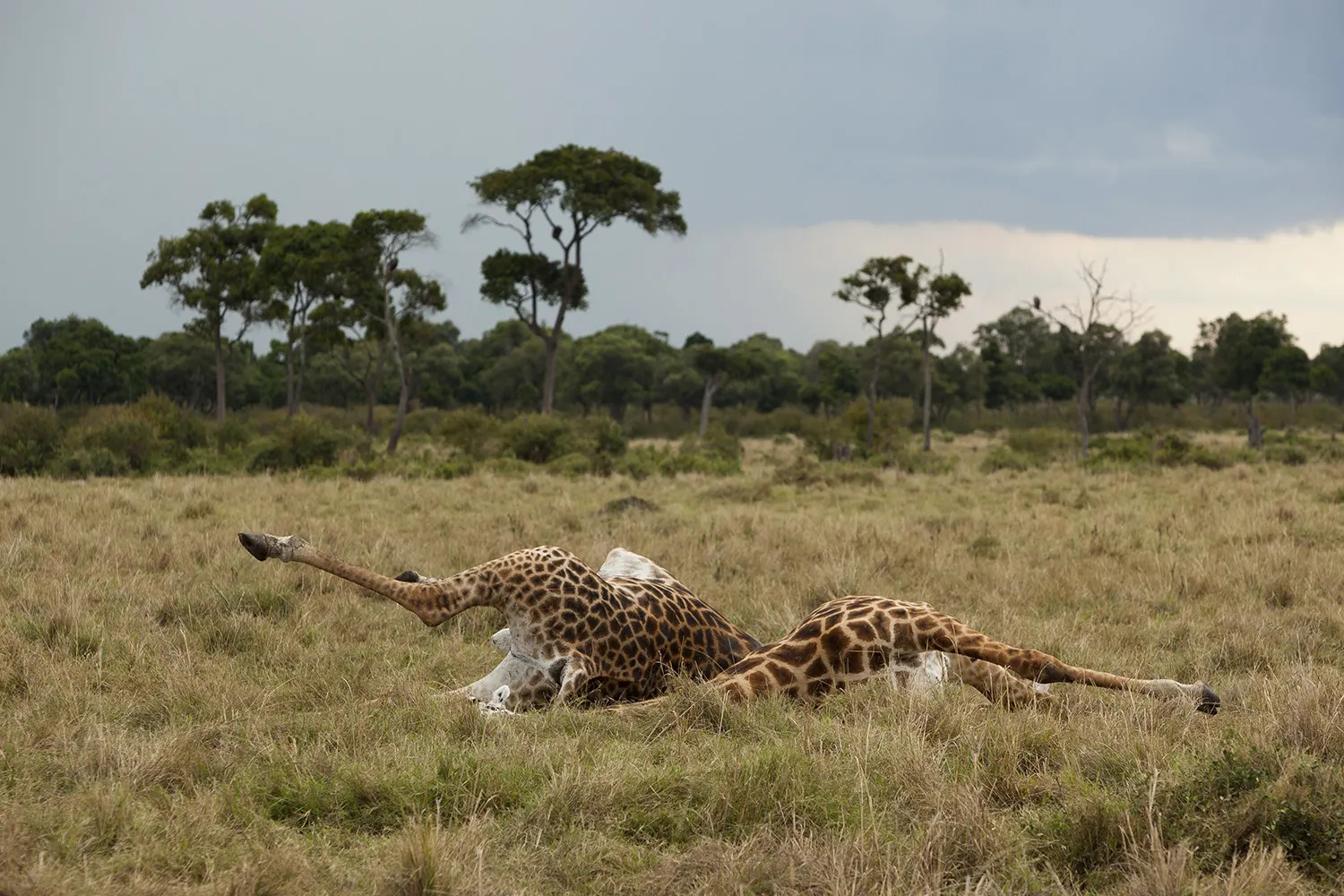
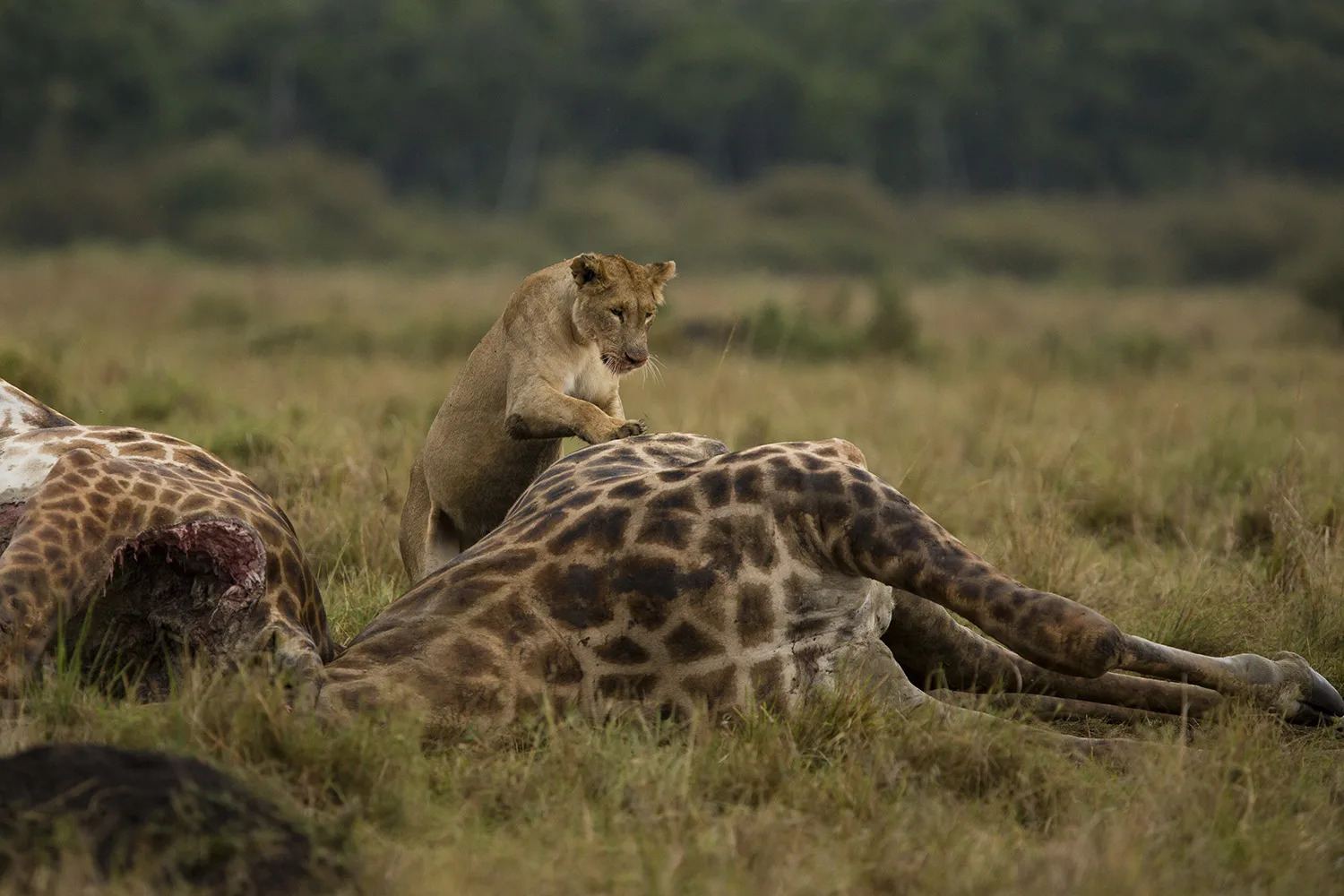


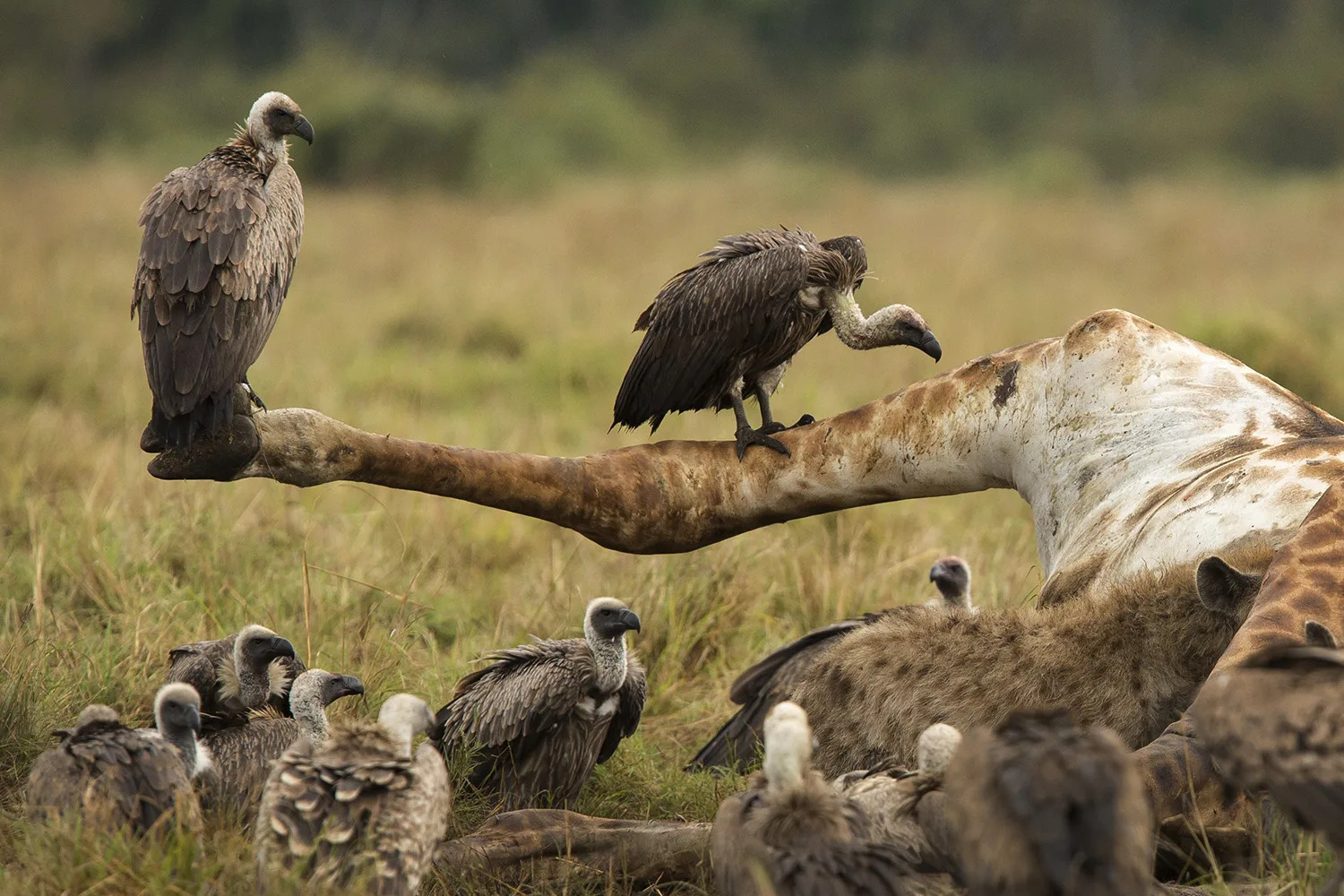

TAGGED WITH: Wildlife, Photography, Maasai Mara, Great Migration, Mara Triangle, Wildlife Photography, Giraffe


